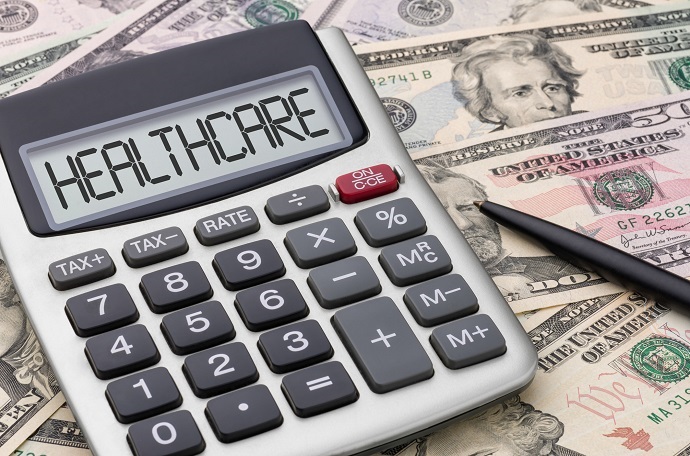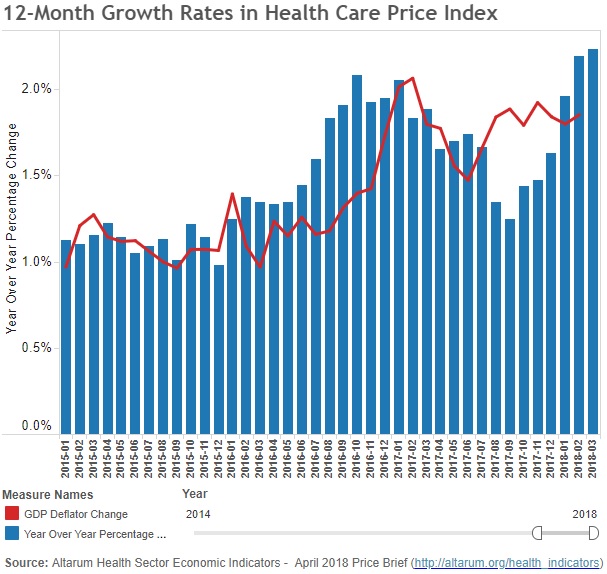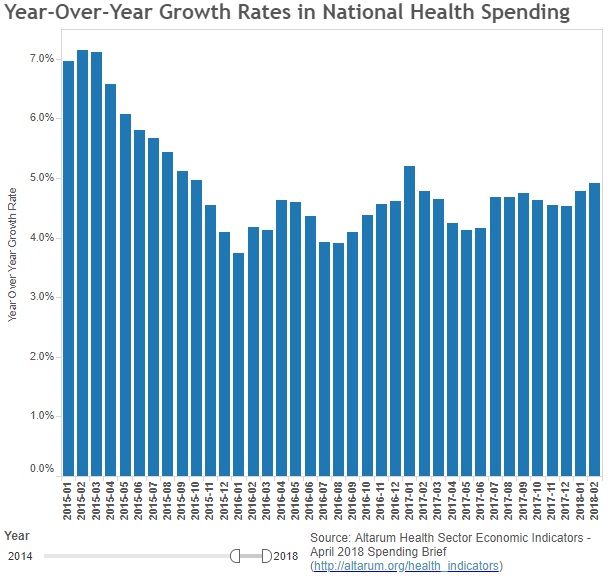Healthcare Prices Hit Highest Annual Growth Rate Since Jan 2012
Healthcare prices rose 2.2 percent in March 2018 compared to the previous year, with hospital prices driving the increase, Altarum reported.

Source: Thinkstock
- The growth rate for healthcare prices increased 2.2 percent in March 2018 compared to the previous year, representing the greatest annual growth rate since January 2012, revealed the most recent Health Care Price Index from Altarum.
Hospital prices largely drove the growth in overall healthcare prices, the brief showed. In March 2018, annual price growth for hospital care was 3.7 percent, which was down slightly from the recent high of 3.8 percent recorded the previous month. Despite the slight dip, hospital prices still represented the fastest growing prices alongside dental services.

Source: Altarum
In the hospital care category, prices for Medicare patients contributed the most to hospital price growth. Hospital price growth for Medicare patients remained at the historical high of 4.6 percent. This is the highest rate since November 2006.
Notably, hospital price growth for Medicare patients outpaced the rate for privately insured patients. The hospital price growth rate for privately insured patients actually decreased in March 2018, falling to 3.7 percent.
Hospital prices for Medicaid patients also decreased during the period, reaching a rate of 1.6 percent in March 2018 from 2.4 percent the previous month.
While hospital prices still represented the largest healthcare price growth rate, the rate for physician practice price growth doubled. However, the rate was still a very low 0.6 percent, the brief stated.
Meanwhile, other healthcare categories experiencing price growth rate changes in March 2018 included:
• Growth rates for prescription drug prices fell from 2.1 percent in February 2018 to 1.9 percent in March 2018
• Nursing home care prices grew 2.1 percent, but the rate is down from 4.7 percent in March 2017
• Home health care price growth rate reached 2.1 percent in March 2018, up from a rate of 0.5 percent the previous year
• Durable medical equipment prices did not experience any growth or decline
Altarum researchers warned that these trends could indicate that the Healthcare Consumer Price Index (HCPI) will continue to increase.
“As we note each month, healthcare inflation is low for this stage of economic recovery, but is a sea change finally in the offing whereby the HCPI heads toward 3 percent, and grows consistently faster than the GDPD [gross domestic product deflator],” they asked.
“March 2018 was the 105th month of expansion following the Great Recession, yet the HCPI growth is not much above 2 percent, though the odd period of it growing more slowly than the GDPD appears to have ended.”
With healthcare prices on the rise, Altarum also found that healthcare spending also increased in 2018. The most recent analysis of spending using February 2018 data revealed that national healthcare spending was 4.9 percent higher than it was the previous February, reaching $3.6 trillion total.

Source: Altarum
Year-over-year spending rose in all major categories studied, with nursing home care spending experiencing the fastest growth at 7.9 percent and prescription drug spending the slowest at 4.2 percent, the brief stated.
Nursing home care spending may have grown the fastest, but hospital care spending represented the largest share of overall healthcare expenditures. Hospital spending totaled $1.16 trillion, accounting for 32 percent of total healthcare spending in February 2018.
In comparison, nursing home and home health care combined only contributed $279 billion, or 8 percent of total healthcare spending.
Hospital spending growth hit 4.3 percent in February 2018, up from 2.7 percent in November 2017. The most recent growth rate showed an increase from the recent low from a couple months ago.
While hospital spending increased, the growth was offset by a reduction in physician and clinical services spending. Physician and clinical services spending represented 20 percent of national healthcare spending growth after its growth rate declined from a recent high of 6.1 percent in July 2017 to 4.4 percent in February 2018.
Combined, overall healthcare spending accounted for 18 percent of GDP, Altarum researchers reported.
“Health spending is outpacing the 4.6 percent growth in GDP in early 2018, but the gap is small by historical standards,” said Charles Roehrig, PhD, Altarum Fellow. “More worrisome is the comparison to growth in full employment GDP, known as ‘potential’ GDP, which the Congressional Budget Office is projecting to grow by 3.8 percent in 2018. As noted in our triangle of painful choices, this amount of excess growth is not compatible with a long-term balanced federal budget, particularly in view of the recent tax cut.”
